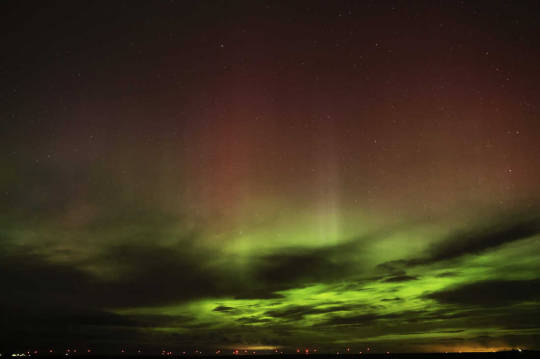#university of northern iowa
Text

Northern Iowa Track & Field
#University of Northern Iowa#Northern Iowa Panthers#track girls#track & field#college track & field#athlete#female athletes#college athlete#college girl
68 notes
·
View notes
Text



(https://www.instagram.com/p/CxrNDToMyfy/)
#university of northern iowa#university of northern iowa wrestling#uniwrestling#uni panther wrestling#panther#wrestling#wrestling practice#practice#wrestling training#training#wrestling tights#compression tights#compression#men in tights#black
20 notes
·
View notes
Photo

Erin Kerkhoff (Northern Iowa)
2023 MVC Indoor Championships (Chicago)
#erin kerkhoff#university of northern iowa#sprinting#ncaa#college athletes#athletics#track and field
12 notes
·
View notes
Text
De Kooning, 1969-1978
I'm trying to figure out what the 1978 exhibition of recent work by Willem de Kooning was, and why Joan Mitchell had a t-shirt from it.
Though I haven't found the answer to either question yet, I have still found absolute gold, that makes this whole conceptual t-shirt project worthwhile.
5 notes
·
View notes
Video
[5] “Sit. Know Your Place.” Professors, Supervisors, & Doctors
“No one should have to bow down and kiss the feet of someone in a leadership role.”
#youtube#roleplay#powergame#highered#university student#non-traditional student#university of wisconsin#university of northern iowa
0 notes
Text
youtube
Alpha Xi Delta Recruitment Video 2022
Published by UNI Sorority Life
#Zee#alphaxideltauni#University of Northern Iowa#UNI#Cedar Falls#Alpha Xi Delta#A--D#Delta Chi#ΑΞΔ#sorority#sororitygirls#sorority girls#sororitylife#sorority life#sisterhood#greek life#go greek#philanthropy#sorority recruitment#panhellenic#orientation#sorority rush#Youtube
0 notes
Text
It’s been one of the wettest years in California since records began. From October 2022 to March 2023, the state was blasted by 31 atmospheric rivers—colossal bands of water vapor that form above the Pacific and become firehoses when they reach the West Coast. What surprised climate scientists wasn’t the number of storms, but their strength and rat-a-tat frequency. The downpours shocked a water system that had just experienced the driest three years in recorded state history, causing floods, mass evacuations, and at least 22 deaths.
Swinging between wet and dry extremes is typical for California, but last winter’s rain, potentially intensified by climate change, was almost unmanageable. Add to that the arrival of El Niño, and more extreme weather looks likely for the state. This is going to make life very difficult for the dam operators tasked with capturing and controlling much of the state’s water.
Like most of the world’s 58,700 large dams, those in California were built for yesterday’s more stable climate patterns. But as climate change taxes the world’s water systems—affecting rainfall, snowmelt, and evaporation—it’s getting tough to predict how much water gets to a dam, and when. Dams are increasingly either water-starved, unable to maintain supplies of power and water for their communities, or overwhelmed and forced to release more water than desired—risking flooding downstream.
But at one major dam in Northern California, operators have been demonstrating how to not just weather these erratic and intense storms, but capitalize on them. Management crews at New Bullards Bar, built in 1970, entered last winter armed with new forecasting tools that gave unprecedented insight into the size and strength of the coming storms—allowing them to strategize how to handle the rain.
First, they let the rains refill their reservoir, a typical move after a long drought. Then, as more storms formed at sea, they made the tough choice to release some of this precious hoard through their hydropower turbines, confident that more rain was coming. “I felt a little nervous at first,” says John James, director of resource planning at Yuba Water Agency in northern California. Fresh showers soon validated the move. New Bullards Bar ended winter with plumped water supplies, a 150 percent boost in power generation, and a clean safety record. The strategy offers a glimpse of how better forecasting can allow hydropower to adapt to the climate age.
Modeling studies have long suggested that better weather forecasts would be invaluable for dam managers. Now this is being confirmed in real life. New Bullards Bar is one of a half-dozen pilot sites teaming up with the US Army Corps of Engineers to test how cutting-edge forecasting can be used to optimize operations in the real world. Early tests of the methods, called forecast-informed reservoir operations, have given operators the confidence to hold 5-20 percent reserve margins beyond their reservoirs’ typical capacity, says Cary Talbot, who heads the initiative for the Army Corps.
To Talbot, FIRO could mean a paradigm shift in how the Corps and others run dams. Historically, dam operators under the Army Corps umbrella had to ignore weather forecasts and respond only to rain and snow that was already on the ground. This rule traces back to the notorious capriciousness of traditional forecasts: If an operator takes a bad gamble on a forecasted weather event, the results can be dangerous. But in practice, this forces operators to react later than their gut tells them to, says Riley Post, a University of Iowa researcher who spent over a decade as a hydraulic engineer for the Corps. They might, for example, be expected to hold water in a nearly full reservoir even as heavy rains approach.
Recent developments, however, have sharpened the trustworthiness of forecasts, particularly for atmospheric rivers on the West Coast. Leaps in computing power have enabled ever-more-muscular climate and weather modeling. To pump these models with data, scientists led by the Scripps Institution of Oceanography have since 2016 launched reconnaissance flights over atmospheric rivers of interest, where they release dozens of dropsondes, sensor packs shaped like Pringles cans. The result is a detailed profile of a storm’s strength, size, and intentions, which can then feed into FIRO.
These reports aren’t clairvoyant; all weather forecasts involve a measure of uncertainty. But a dam operator with increased confidence in when, where, and how much water will strike their watershed can take a more “surgical” approach to holding or releasing water, Post says.
And if they know how much time they have, they can also make the most of their existing water. Take Prado Dam, a vintage 1941 facility that was built to shield Orange County from flooding but can also distribute water to 25 groundwater-recharge stations. This past winter, forecasts showed a well-spaced parade of storms tracking its way. So operators pulsed water from the dam into storage at an optimal cadence, giving it time to soak into the landscape. Adam Hutchinson of the Orange County Water District, which manages the groundwater-recharge system, said publicly in July that these actions delivered an “exceptional” boost to water supplies for “those dry years we know are coming.”
Jinsun Lim is an analyst with the International Energy Agency think tank who studies climate resilience in the energy sector. Lim says that this sort of specificity is exactly what hydro officials in many countries wish for: tools that can translate climate impacts at a local level for their unique watersheds and infrastructure. Talbot hasn’t seen anything quite like FIRO deployed abroad, but he says that curious parties from the UK, Chile, Southeast Asia, Australia, and other regions have contacted him. Meanwhile, other corners of the hydro world are applying similar logic to their own climate challenges.
For BC Hydro, which serves 95 percent of British Columbia’s population, heat waves have proven a bigger problem than drought. Rivers and rains remain strong, but the province’s historically mellow springs and summers have warmed up, prompting many people to switch on air conditioners, which jacks up power demand. To keep the ACs humming, BC Hydro keeps a close eye on its fuel supply, that is, its watershed. About 150 monitoring stations, equipped with snow, climate, and surface-water sensors, enable a near-real-time picture of water flows. This helps operators store up water for demand spikes in summer and winter alike.
Tajikistan, which gets fully 98 percent of its power from hydroelectricity, is adapting its fleet with a mix of hard and soft measures. Renovations at the 126-megawatt Quairokkum power plant, built in 1956, were screened against a range of climate scenarios—such as the diminution of its source glaciers. Just replacing its six Soviet-era turbines will hike output to 170 megawatts; the dam will also be reinforced for a 10,000-year flood whose intensity could exceed the previous design standard by anywhere from 15 to 70 percent. Meanwhile, investments by international funders in HydroMet, the country’s long-dysfunctional meteorology service, are paying off: The agency recently gave power generators early notice of a dry year, enabling forward planning.
Recent trends have underlined the need for such changes. Earlier this year, the International Energy Agency said today’s hydropower facilities are on average 2 percent less productive than dams were from 1990 to 2016. Droughts have weakened flows at many plants, the agency said, leaving fossil-based energy to fill a gap the size of Spain’s annual power use. Other dams have been exposed to extreme events for which they weren’t strictly engineered, as in north India in 2021, when a crumbling glacier sent forth a wall of water that wrecked dams and towns downstream. Last month’s disaster in Libya, due to the failure of two flood-control dams hit by a supersized Mediterranean storm, further underlines the risks of maladapted facilities.
Even hydropower’s harshest critics take no issue with nip-and-tuck improvements at today’s dams. But amid a massive expansion planned in the Global South, they warn against overconfidence that hydropower can adapt its way out of climate change. In July, an environmental group in Namibia urged the government to rethink a large dam proposed for the Kunene River, saying it’s prone to the same climate extremes that have sapped the energy of Namibia’s other dams.
As climate disruption sets in, solar and wind can provide equivalent power with less risk, says Josh Klemm, co-executive director of International Rivers, a human rights organization focused on river communities. “We need to really reexamine plans to develop new hydropower,” he says. “We’re only going to deepen our reliance on a climate-vulnerable energy source.”
The Army Corps, meanwhile, is in the early stages of studying whether FIRO can be attempted at 419 other dams under its umbrella. Scaling up FIRO isn’t entirely straightforward; other parts of the US have different kinds of precipitation events than California does, and some of these are currently a lot harder to predict than atmospheric rivers. But Talbot is optimistic that the ever-improving forecast science can find efficiency gains there for the taking. “It’s making your existing infrastructure work harder for you,” he said. “In the face of climate change, this sounds like a great way to position ourselves for buffering that.”
35 notes
·
View notes
Text

When the Biden Administration announced Wednesday that it would cancel $10,000 of federal student loans for Americans making under $125,000 per year, and $20,000 for Pell Grant recipients at the same income level, the backlash was predictable. Critics, often older people who had gone to college before the 1980s, called the policy a giveaway to the college educated, and unfair to those who had paid their way through school.
While I was reporting my book, The Ones We’ve Been Waiting For, I spent months researching why the student debt crisis has hit younger generations so hard— and why many older Americans don’t seem to understand the unique financial predicament of millennials and Gen Z. One key reason is that college affordability has radically transformed over the last 50 years. Many of the older conservatives who are angry at the idea that taxpayers might pay for student loan forgiveness went to school at a time when the government was heavily subsidizing higher education, and therefore tuition was far less expensive. For them, working their way through school without debt was feasible; for modern millennials and Gen Z, it’s often financially impossible.
Senate Minority leader Mitch McConnell called Biden’s loan forgiveness plan “student loan socialism” and said it was a “slap in the face to every family who sacrificed to save for college.” But when McConnell graduated from the University of Louisville in 1964, annual tuition cost $330 (or roughly $2,500 when adjusted for inflation); today, it costs more than $12,000, a 380% increase. When House Minority Leader Kevin McCarthy, who called the policy a “debt transfer scam,” graduated from California State University, Bakersfield in 1989, tuition was less than $800; today, it’s more than $7,500, a 400% increase when adjusted for inflation. Nevada Senator Catherine Cortez Masto, a moderate Democrat who is running for re-election this year, told Axios she disagreed with the policy because “it doesn’t address the root problems” of college affordability; when Cortez Masto graduated from the University of Nevada in 1986, tuition was a little more than $1,000— today, it’s roughly three times as expensive.
And don’t forget Republican Senator Chuck Grassley, who called the policy “UNFAIR” on Twitter. He graduated from the University of Northern Iowa in 1955, when annual tuition cost roughly $159, or between $40 and $53 per quarter. Today, it costs more than $8,300, a nearly 500% increase even when adjusted for inflation.
Younger generations might say what’s really “unfair” is that many Baby Boomers and the Silent Generation had access to highly subsidized higher education with affordable tuition, while some millennials and Gen Z get just $10,000 of student loan forgiveness. Those calling Biden’s new policy “socialism” would do well to remember this: In 1987, a student at the University of Kansas could pay her tuition with a part-time minimum wage job and still have some left over for books and food. In 2016, a student working a minimum wage job would come up $38,000 short.
👉🏿 https://time.com/6208484/biden-student-loan-critics-college/
#politics#republicans#education#college should be free#cancel student loan debt#student loan debt#college#mitch mcconnell#kevin mccarthy#chuck grassley#catherine cortez masto
351 notes
·
View notes
Photo

The northern lights are coming to several states this week. Here's how to watch : NPR
... The aurora borealis could be seen across parts of Washington, Idaho, Vermont, Wyoming, New Hampshire, Montana, North Dakota, South Dakota, Minnesota, Nebraska, Massachusetts, Maryland, Ohio, Wisconsin, Michigan, New York, [and] Maine, according to the university.
On Wednesday, the storm will be highly visible "low on the horizon from Seattle, Des Moines [Iowa], Chicago, Cleveland, Boston, and Halifax [Nova Scotia]."
On Thursday, the storm will get stronger and can be seen overhead in Minneapolis, Milwaukee; Bay City, Mich., and on the horizon in Salem, Mass.; Boise, Idaho; Cheyenne, Wyo.; Lincoln, Neb.; Indianapolis, and Annapolis, MD. ...
... The Space Weather Prediction Center says the best time to view the aurora is usually between 10 p.m. and 2 a.m. local time.
You don't need any special equipment to see auroras.
Pick a spot where there is little light pollution.
Get to a higher elevation if possible.
Check the forecast for signs of clouds or precipitation, which could block your view.
Scan the skies...they can appear from all directions.
84 notes
·
View notes
Text
제목: 뱁새 VS 황새
은행알을 돌려서 광주 수피아 여중에 가게 된것이 우연이 아니듯이, 나의 미국유학은 결코 우연이 아니다.
중학교 1학년때 의례적인 IQ 검사를 했다. 그 숫자의 의미가 뭔지는 모르지만 내 IQ점수 148로 전교생중에 다른 두 학생과 함께 최상의 점수로 알려졌다. 내 점수가 왜 그렇게 높게 나온 가는 나만 안다. 머리가 유달리 좋아서가 아니다. 가난했던 우리 엄마가 나를 대입준비하는 인문고가 아닌 상업고등학교에 보낼 작정으로 일찌감치 주산학원에 보냈다. 몇년동안 날마다 주판 알을 튕귄 덕분에 나의 암산 실력이 남달랐다. 지금도 두세자리 숫자의 계산은 그냥 암산으로 하는 것이 계산기보다 빠르다.
우리 담임 정 기성선생님은 IQ가 최고로 높은 학생이 자기반에 있다는 것에 신이 나셨다. 가끔 수수께끼같은 고리룰 가져와서는 “ 조 영희, 이거 열어봐.” 하시고 내가 문제없이 해결하는 걸 보시고는, “영희 너는 여기서는 안되겠다. 미국에 가서 공부를 해야돼.”
고등학교땐 IQ고 뭐고 나의 성적은 시궁창으로 꼬꾸라졌다. 왜 일까? 공부를 전혀 안 했기 땨문이다. 졸업 후 그냥저냥 새마을유아원 보조로 일하면서 주말의 소일거리는 오락실에서 테트리쓰를 하고, 자정 넘어도 방영되는 AFKN 에서 영화를 보거나, 심심하면 오빠가 대학교에서 가져온 Times magazine 을 뒤적이거나 하는 것이었다. 그래도 심심하면 수학정석을 풀었다.
가족이라곤 엄마랑 오빠이니 주변사람들이 내게 관심을 갖지않은사이 나는 유치원에서 잘 가르치는 교사가 되어있었고, 어느새 스물예닐곱의 노처녀가 되어있었다. 어느 여유로운날, 같은 동료들이랑 일과 후에 취미로 뭘할까 서로 의견을 나누었다. 테니스, 초상화 그리기, 붓글씨, 에어로빅등의 다양한 아이디어가 나왔다. 난 그럴돈은 없었고 설령 있다해도 그런취미는 부르죠아지나 하는 것들이었고 또 공부가 아니라서 소득이 없다고 믿었다. 영어를 배우면 어떨까하는 생각에 강남에 영어학원을 찾았는데 그 문턱오르기가 험난했다. 영어회화반에 들어기려면 반편성을 위해서 영어선생님과 대화를 해야했다! 무서움에 떨며 내 순서를 기다리는데 두어명의 파릇한 여대생들이 인터뷰하기 “쪽팔리다” 며 떠났다. 나도 일어서서 나오려는 찰라에 내 이름을 부르며 문이 열렸다. 아이고! 난생처음 본 외국사람하고 영어로 대답을… 휴! Level 은 Top 1부터 bottom 10. 난 7 을 받았다. 내가 “My name is Younghee.” 까지는 했는 모양이다. 그것이 파고다학원의 시작이었다.
회화반 학생들의 목표는 단 한가지였다. 영어를 잘 하는것. 많은 학생들이 시작은 하는데 끝까지 level 1 까지 가는 사람은 드물었다. 나는 젊은 대학생들처럼 신나는 방과후 파티가 없었기에 그냥 날마다 회화반에 갔다. 어디가나 내가 제일나이가 많아서 멎적었지만 그냥 물만난 물고기처럼 잘 떠다녔다.
영어도 영어지만 그 외국인 선생님들의 서구의 사고방식을 많이 배웠다. 무엇보다도 대화전에 내 나이를 묻지 않아서 좋았다. 어린 헉생들이 유학준비에 대한 얘기를 듣고 나도 얼떨결에TOEFL 시험을 봐봤다. 540이 나왔다. 어린학생들이 깜짝놀라며 서로 같이 공부하자했다. 그러나 내게 유학이란 것은 허황된 꿈이었다. 유학? 그다음엔? 답이 없었다. 흙수저로 흙산에 살았던 나는 그런 생각을 하면 안 되었다. “뱁새가 황새 따라가면 가랭이가 찢어진다.”
제때에 결혼을 안하니 친구도 사라지고 선을 보라는 예기가 쏟아졌다. 결혼을 전제로 한 맞선만큼 어색하고 불편한 게 없었다. 마치 소를 매매하는 시장에서 소 이빨을 들쳐보고 피부의 탄력성을 체크하며 가격을 흥정하는 곳에서 내가 소가 된 느낌이었다. 어떤 아주머니는 진짜로 내 앞머리를 자기손으로 들쳐서 내 이마의 선을 가늠하기도 했다. 어떤 중매쟁이는 내가 눈을 올려뜰때가 더 예쁘다며 선 볼때 그리하라고 제안을 하기도 했다. 우리집은 결혼 시킬 돈도 없는 상황에서 결혼하는 길이야말로 인생의 최종 살갈인것처럼 친구들이나 친척들이 선을 주선하기 바빴다. 그들은 선 보는 자리가 내게 얼마나 나를 발가벗기는 악랄한 자리였는지 모르는 것같았다. 선을 안본다면 “너 무슨 문제있냐?“애프터를 거절하면 “니가 뭐가 잘났냐” 고 애프터를 승락하자니 두달안에 결혼준비를 해야 될것같은 이 사태를 누가 알랴. 나이 30이 되니 재혼자리도 중매가 들어왔다. 그나이가 금값은 아니라는 뜻이 아니었던가.
이 상황에서 탈출구가 필요했다. 하고싶지 않은 중매결혼을 한다는 것이 �� 무덤울 파는것같았다. 그렇다면 유학을 갖다와서 결혼해도 좋지않나하는 샹각이 들었다. 종로유학센터에 찾아가 이백만원을 내고 유학준비를 의뢰했다. 내가 혼자 준비하자니 어떤 장애가 있으면 포기할 것 같아서였다. 내가 정말로 탈출하기를 원했었나보다.
유학센터에서 필요한 서류를 갖다주고나서 2개월쯤후에, 세군데 대학교에서 입학허가가 왔다, University of Virginia, University of Illinois, and University of Northern Iowa. 한정된 내 재정을 고려하고 큰도시인 서울생활에 신물난 나는 University of Norther Iowa를 선택했다. 1995년 1월 9 일 나는 Cedar Falls, Iowa 에 도착했다. 그렇게 눈이 많이 온 도시를 처음봤다. 그 추운날, 뱁새가 황새가 되던 날이었다.

4 notes
·
View notes
Text


(https://www.instagram.com/p/CyPchi9OW2M/)
(https://www.instagram.com/p/CygMAzKO7Yo/)
#university of northern iowa#university of northern iowa wrestling#uniwrestling#uni panther wrestling#panther#wrestling#wrestling practice#practice#wrestling training#training#nike#nike wrestling#wrestling tights#compression tights#compression#men in tights#black
15 notes
·
View notes
Photo

Fleetwood Mac performs athe the Uni-Dome in Cedar Falls, IA - October 25, 1982.
Page from the University Of Northern Iowa 1983 yearbook.
67 notes
·
View notes
Text


The week between eight-figure sales of her paintings is traditionally known as Joan Mitchell Season. To commemorate this year, greg.org has created a facsimile of Joan's epic swag from the cover of Guy Bloch-Champfort's book: the souvenir T-shirt from the inaugural exhibition of The Gallery of Art of the University of Northern Iowa.
The shirt is available until the hammer drops on Sunflowers, the 1990-1991 diptych expected to sell at Sotheby's for $25-35 million, on 15 November 2023. It comes with a numbered, signed, and stamped certificate of authenticity.
#joan mitchell#happy joan mitchell season to all who celebrate#conceptual t-shirts#auctions as historic and/or art historic events#the gallery of art of the university of northern iowa#de who-ning?#certificate of authenticity
16 notes
·
View notes
Text

Hello folks! I will be tabling at the University of Northern Iowa’s RodCon on April 1st. I’m at table 52. Come by and say hi if you’re around. I’m not sure if I’ll get to do another show this year.
12 notes
·
View notes
